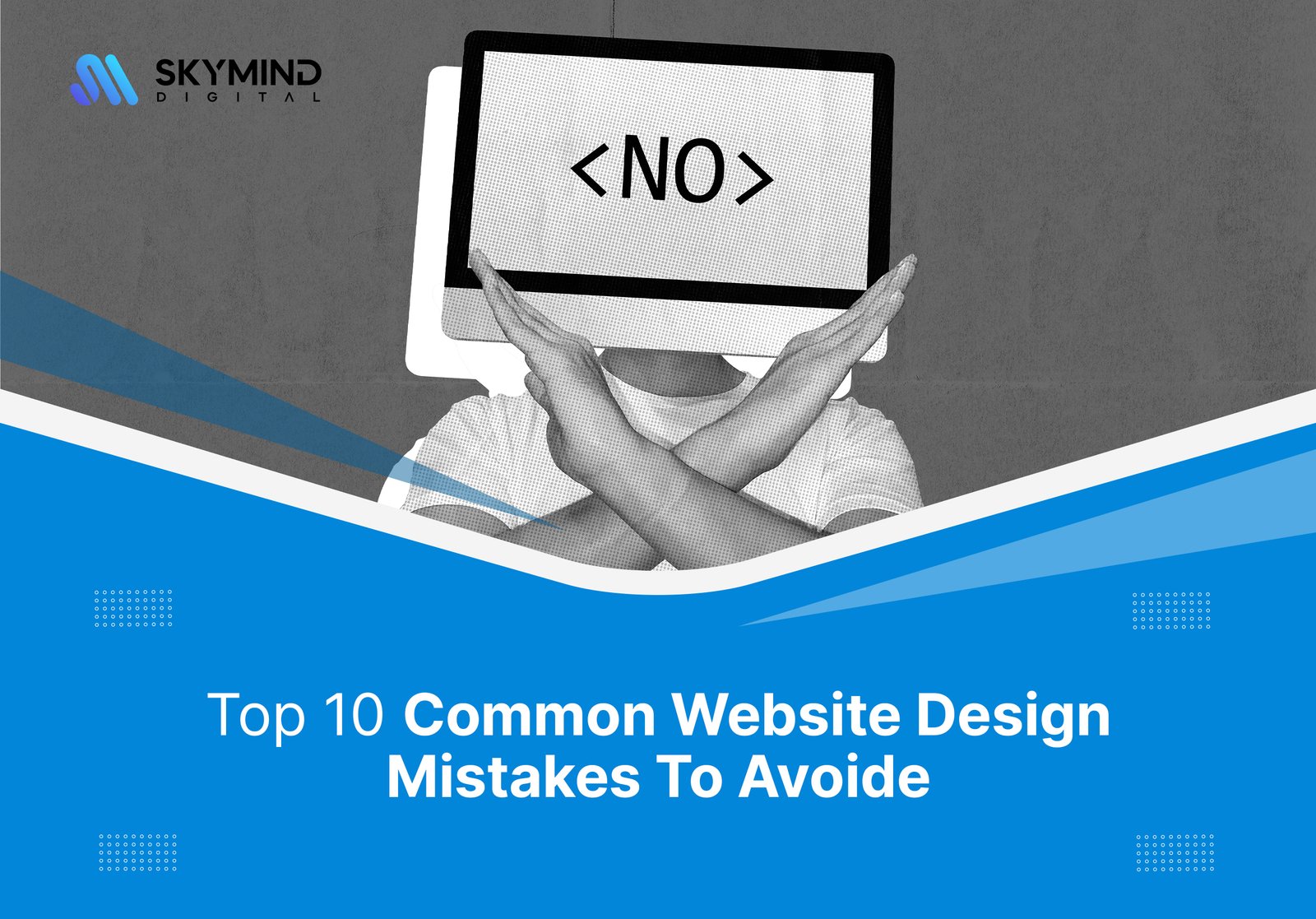In today’s hyper-competitive world, where startups are born every minute, standing out is no longer just about having a great product—it’s about reaching the right people, at the right time, in the right way.
For founders and CEOs like you, digital marketing isn’t a luxury; it’s the backbone of sustainable growth.
As we step into 2025, the rules of the game are evolving fast.
AI is revolutionizing personalization. Automation is freeing up your time so you can focus on strategy. And trends like voice search, AI-driven SEO, and social commerce are reshaping how customers interact with brands.
In this blog, Sky Mind Digital’s experts reveal the best marketing strategies every startup should adopt to grow faster, reach the right audience, and build brand authority. These tips are practical, actionable, and tailored to the demands of modern business.
1. Why Digital Marketing is Crucial for Startups in 2025?

In 2025, startup founders face fiercer competition than ever.
Every day, new businesses launch with fresh ideas and disruptive solutions. But in such a noisy market, how can your startup rise above the clutter?
Traditional marketing tactics alone won’t get you there. That’s where digital marketing becomes your biggest ally—it empowers startups to compete with larger companies, even on a lean budget.
With a good marketing strategy, you can precisely target your ideal customers, track performance in real-time, and adapt campaigns on the fly for optimal results.
Channels like social media advertising, SEO, and content marketing make it easier—and cheaper—to reach your audience directly.
The real power lies in flexibility.
You’re no longer tied to outdated guesswork. You can monitor campaign performance and instantly make improvements to boost effectiveness.
The numbers tell a compelling story:
🔹 78% of businesses plan to invest more in digital marketing (Rocket Global).
🔹 73% are focusing more on social media (Mayple).
🔹 87% of marketers plan to increase or maintain their email marketing spending in the future. (Shopify).
🔹73% in house marketers rate social media great for ROI. (Statista)
So if you want to succeed in 2025, adopting the best marketing strategy is no longer optional. A well-crafted digital presence is the foundation of any successful marketing strategy today.
2. Setting the Foundation: Defining Your Goals

Every successful business starts with a clear plan—and the same goes for marketing. If you’re building a startup, you can’t afford to guess your way through growth. You need to know exactly what you’re working toward.
That’s why goal setting is the foundation of the best marketing strategies. Without clear objectives, it’s easy to waste time, money, and effort.
For startups, SMART goals—Specific, Measurable, Achievable, Relevant, and Time-bound—are a game-changer. They give you structure, focus, and a clear path forward.
Instead of saying “I want more website traffic,” a SMART goal looks like:
“Increase website traffic by 30% in the next 6 months through SEO and targeted ads.”
That kind of clarity makes decision-making easier and results more measurable.
Here are a few examples of SMART goals tailored for startups:
- Brand awareness: “Grow Instagram followers by 20% in 3 months using content campaigns and influencer collabs.”
- Lead generation: “Generate 500 new leads in 60 days using lead magnets and optimized landing pages.”
- Conversions: “Achieve a 5% signup conversion rate by testing weekly email offers and refining copy based on engagement.”
Setting SMART goals gives you a direction—and direction leads to progress. It’s the foundation of any effective marketing strategy.
3. Understanding Your Target Audience

Even the best marketing strategy won’t work if it’s aimed at the wrong people. Understanding your target audience is at the core of every successful marketing strategy.
That’s where buyer personas come in.
Think of them as detailed profiles of your ideal customers—their goals, challenges, preferences, and decision-making habits.
And yes, they work: businesses that use personas see up to 5x higher conversion rates, according to HubSpot.
To create useful personas, ask yourself:
- What problems are they trying to solve?
- What motivates them to buy?
- What content are they consuming—and where?
Use tools like Google Analytics, Facebook Insights, and heatmaps to gather data. You’ll start to see patterns that help you tailor your message more effectively.
And in 2025, it’s not just about knowing who they are—it’s about creating personalized experiences. Hyper-personalization is no longer optional; it’s expected.
Startups that deliver content, offers, and product recommendations tailored to individual behavior stand out—and sell more.
In fact, 80% of consumers are more likely to buy from brands that personalize. (Epsilon)
Knowing your audience well is the first step toward executing good marketing strategies that truly connect.
4. Building an Online Presence That Stands Out
In 2025, your online presence is your storefront. Whether someone hears about you through a referral, an ad, or a Google search—your website and content are often their first impression. And in the startup world, first impressions matter more than ever.
Standing out online isn’t about doing one thing really well. It’s about combining the best marketing strategies—your website, SEO, and content marketing—all working together to attract, engage, and convert.
Companies that invest in these areas aren’t just growing; they’re thriving.
According to Digital Marketing Institute, strong SEO alone can lead to conversion rates as high as 14.6%, and content marketing generates 3x more leads than traditional advertising.
This isn’t theory—it’s what’s working right now.
4.1 Website Optimization

Your website isn’t just a digital brochure—it’s the engine of your growth. For startups, it plays a critical role in delivering a smooth user experience and converting traffic into paying customers.
Start with the basics: mobile responsiveness. With over half of all web traffic coming from mobile, a responsive site that adjusts to any screen is essential. People won’t wait—they’ll bounce if it’s clunky or slow.
Speed matters. A one-second delay can cut conversions by 7% (Akamai). Optimize load time by compressing images, enabling caching, and choosing a hosting provider that prioritizes performance.
Navigation should be clear and intuitive. Your visitors shouldn’t have to guess where to click next. A clean layout and well-placed CTAs guide them to take action—whether that’s booking a demo, making a purchase, or subscribing to your list.
And don’t overlook design. A good user experience isn’t just about looks—it’s about function. Forrester found that a well-designed user interface can boost conversion rates by up to 200%. That’s a number worth paying attention to.
If you’re aiming for a successful marketing strategy, it starts with a website that delivers on speed, clarity, and usability.
4.2 SEO Mastery

If your audience can’t find you, they can’t buy from you. That’s why SEO is one of the most effective marketing strategies for startups today.
It starts with understanding what your ideal customers are searching for. Use that insight to craft your content around high-intent keywords that align with their needs. Then, make sure your site structure, meta descriptions, and internal links support those efforts.
Backlinks—links from credible, relevant websites—are a strong trust signal to search engines. The more quality backlinks you earn, the more visible you become.
For startups targeting local markets, local SEO is a must. Optimize for “near me” searches, and don’t forget to claim and update your Google Business Profile. Nearly half of all Google searches are looking for local info, and most people who do a local search visit a business nearby within hours.
Startups that prioritize SEO consistently outperform those who don’t. Organic traffic is high-intent traffic—and that makes SEO part of every good marketing strategy worth following.
4.3 Content Marketing Strategy

Content is still king—but it’s smarter, faster, and more interactive than ever.
If you’re serious about growth, content marketing should be at the center of your game plan. It helps you attract the right people, build trust, and stay top of mind—without always having to rely on paid ads.
Blogs, videos, infographics—these formats let you educate, entertain, and engage. And the data backs it up: content marketing delivers 3x more leads than paid search. That’s huge for startups working with leaner budgets.
Short-form videos are having a moment. Whether it’s TikTok or Instagram Reels, these platforms help you connect with younger audiences in ways static content can’t. And consumers love it—60% prefer video over other formats.
Interactive content is another winner. Polls, quizzes, and surveys don’t just boost engagement—they invite your audience to participate, making your brand feel more human.
And don’t underestimate the power of storytelling. People remember stories, not stats. Brands that weave storytelling into their content see 22% more engagement.
The best marketing strategy isn’t about being everywhere—it’s about showing up consistently with content that delivers value. That’s how you build trust, attract loyal fans, and turn them into customers.
5. Harnessing the Power of Social Media

If you’re running a startup in 2025, social media isn’t just nice to have—it’s a must. It’s one of the best marketing strategies for building brand awareness, engaging with potential customers, and driving sales.
Each platform serves a different purpose, and knowing where your audience spends time is key.
For B2B startups, LinkedIn is gold. With 80% of B2B leads coming from LinkedIn, it’s the go-to space for building connections, sharing insights, and positioning your brand as a thought leader.
If your audience skews younger, TikTok and Instagram are where the action is. TikTok has more than 1 billion active users, and 67% of them say they’ve made a purchase after seeing a product on the app. That’s not just visibility—it’s impact.
Instagram continues to thrive, with 90% of users following at least one business. With features like Stories, Reels, and DMs, it’s built for connection and community.
In 2025, social commerce is taking center stage. With tools like Instagram Shops and TikTok Shopping, startups can sell products directly on the platforms their customers already use—no need to redirect to another website. This seamless buying experience is projected to drive over $1.2 trillion in sales.
When done right, social media becomes more than just a brand booster—it becomes a direct revenue driver and a core piece of a successful marketing strategy.
6. Paid Advertising for Startups
While organic efforts are important, paid advertising gives startups the momentum they need to grow fast. It’s one of the most effective marketing strategies for reaching a highly targeted audience and getting real results without the long wait.
6.1 Search Engine Advertising

Search engine ads, especially through Google, are perfect for catching people when they’re actively looking for what you offer.
By targeting high-intent keywords like “best CRM for small business” or “affordable logo design services,” your startup can show up exactly when someone’s ready to take action.
Google Ads remains a powerhouse for a reason. Businesses using it see an average 200% ROI, making it a smart, performance-driven choice.
Tools like Smart Bidding help automate your campaigns so you’re not guessing what works. You’re bidding in real-time, adjusting to what’s bringing the most conversions.
And the beauty of it? You only pay when someone clicks.
If you’re looking to grow quickly and efficiently, search engine advertising should be a part of your best marketing strategy.
6.2 Social Media Ads

Social media ads allow you to reach your audience where they already are—scrolling through Instagram, networking on LinkedIn, or engaging with content on Facebook.
To make your campaigns work, start by setting clear goals: brand awareness, lead gen, or conversions. Then segment your audience by location, interests, behavior, and buying intent.
Visuals matter. So does copy. On platforms like Instagram and Facebook, carousel ads and videos increase engagement by 40%. LinkedIn, especially for B2B startups, offers an average conversion rate of 2.74%, which is impressive in the digital space.
Don’t just set it and forget it. Run A/B tests to experiment with headlines, creative, and targeting. A simple tweak can boost engagement by 20% or more.
Retargeting ads are also powerful. They remind users who’ve interacted with your site to come back—and that’s where the conversions often happen. In fact, retargeting can increase conversion rates by up to 70%.
Startups that use good marketing strategies with paid social see measurable returns—often a 30% boost in leads and sales when done right.
6.3 Programmatic Advertising

If you’re looking to scale smarter, programmatic advertising should be on your radar.
This isn’t traditional ad buying. It uses automation and data to deliver your ads to the right person at the right time—with almost no manual work involved.
With real-time bidding, your budget goes further. You’re not wasting money on the wrong audience. You’re reaching the people most likely to convert.
Programmatic campaigns often lead to a 20% increase in sales and a 50% better ROI compared to old-school methods.
For startups, this matters. Every dollar counts. Programmatic advertising gives you the ability to scale faster, reach more qualified leads, and make every ad dollar work harder.
As far as new marketing strategies go, this one delivers both precision and results—exactly what a growing business needs.
7. Lead Generation Strategies

Lead generation is the heartbeat of every growing startup. You can have the best product in the world, but if you’re not bringing in quality leads, growth stalls. The best marketing strategies always include a plan for consistent lead generation.
One of the most effective ways to attract leads is by offering valuable resources—lead magnets like eBooks, webinars, checklists, or free trials. These aren’t just freebies; they’re proven tools to encourage people to engage with your brand. In fact, businesses that use lead magnets see up to 40% more leads.
But it’s not just about what you offer—it’s about how you offer it.
A focused, high-converting landing page makes all the difference. Keep the layout clean, the form short, and your CTA clear. Studies show that a well-designed landing page can increase conversions by 25% or more.
Once you’ve captured those leads, email marketing becomes your best friend. Platforms like Mailchimp or HubSpot allow you to automate personalized email sequences, follow up based on user behavior, and keep your brand top of mind.
Email remains one of the most cost-effective marketing strategies, offering an average ROI of $42 for every $1 spent. That kind of return makes it a key part of any successful marketing strategy.
By combining lead magnets, optimized landing pages, and automated email marketing, you’ll create a good marketing strategy that drives consistent results.
8. Automation and Tools for Efficiency
As your startup grows, so does the workload. That’s where automation and marketing tools come in. They allow you to streamline processes, save time, and focus on what truly matters—scaling your business.
These tools are not just for convenience—they’re part of the best marketing strategies being used by successful startups today.
8.1 Email Automation
Email automation is more than just scheduled messages. It’s about building relationships at scale.
Drip campaigns send a sequence of emails triggered by user behavior—welcoming new subscribers, following up after downloads, or nurturing interest in your services. These campaigns have been shown to boost conversions by up to 300%.
Personalized email sequences take it even further. By tailoring your content to each recipient, you can achieve 6x higher transaction rates compared to generic email blasts.
With the right setup, email automation becomes a powerful part of an effective marketing strategy, helping you stay connected, relevant, and ready to convert.
8.2 CRM Integration

If you’re not tracking your leads and customer interactions in one place, you’re missing out. That’s where a CRM (Customer Relationship Management) tool becomes invaluable.
Systems like HubSpot, Zoho CRM, or Salesforce help startups manage contacts, automate follow-ups, and stay organized—all from a single dashboard.
Startups using CRMs report a 29% increase in sales and 34% better lead conversion rates. Why? Because you’re not just collecting leads—you’re actively managing them.
CRM integration supports smarter communication, better targeting, and ultimately, a more successful marketing strategy.
8.3 Chatbots and AI

Let’s face it: customers expect instant answers. And startups don’t always have the bandwidth to reply 24/7.
Chatbots help bridge that gap. Whether it’s answering FAQs, guiding users to the right page, or capturing leads, chatbots are becoming essential to new marketing strategies focused on efficiency and personalization.
Businesses using chatbots have seen a 30% increase in lead generation and a 70% reduction in response time.
Customers appreciate fast, helpful responses. And with 64% expecting 24/7 support, startups that deliver that kind of experience earn more trust—and more sales.
Chatbots may run on automation, but when used right, they create very human experiences.
9. Measuring Success: Analytics and KPIs

Marketing without measurement is just guesswork.
Tracking performance through analytics and KPIs is how you separate what’s working from what’s not. This insight allows you to double down on effective tactics and drop the ones that waste time and money.
Start with key metrics like:
- Traffic – how many people visit your site
- Engagement – how they interact with your content
- Conversions – how many take meaningful actions (signups, purchases, etc.)
- ROI – the return on your marketing investment
Companies that consistently monitor their metrics see a 20–30% increase in leads and sales. Why? Because they’re making informed decisions, not relying on guesswork.
Tools like Google Analytics, SEMrush, and platform-specific insights help you understand performance across the board—from SEO to social media.
When you align your efforts with real data, you build a best marketing strategy grounded in results—not assumptions.
10. Embracing 2025 Trends
To stay competitive in 2025, startups must do more than just keep up—they need to lead. Embracing emerging trends and integrating them into your digital approach is how you move from survival to sustainable growth.
Forward-thinking founders are already weaving Search Engine Ads, Social Media Ads, and Programmatic Advertising into their plans. These tools are more than just add-ons—they’re part of the best marketing strategies used by startups aiming for scale, efficiency, and impact.
10.1 AI and Machine Learning

AI and machine learning are changing the way marketing works. These tools allow startups to personalize campaigns, predict customer behavior, and automate decisions with precision.
With AI, you can analyze massive amounts of customer data and deliver personalized content at exactly the right moment. That matters—personalized marketing can increase conversions by up to 10%, according to McKinsey.
Even better, predictive marketing helps you anticipate customer needs before they even reach out. Startups using AI in this way have seen 20% more sales and a 30% boost in customer retention.
It’s not about replacing creativity—it’s about amplifying it. If you’re building an effective marketing strategy, AI should be in your toolkit for 2025.
10.2 Voice Search Optimization

Voice search isn’t a trend—it’s becoming a standard part of how people find information.
By 2025, over half of all searches are expected to be voice-based. That means your content needs to sound like a conversation—not a search query.
Instead of writing for search engines, write for how people speak. Include long-tail keywords and natural phrases like “Where can I find affordable web hosting?” or “How do I start a dropshipping business?”
Businesses that optimize for voice search see up to a 30% increase in organic traffic, along with improved conversions.
This shift is an essential part of any good marketing strategy focused on staying visible and relevant as user behavior evolves.
10.3 Web3 and Blockchain Marketing
Web3 and blockchain aren’t just buzzwords anymore—they’re reshaping how brands connect with customers.
Decentralized platforms offer transparency and control, which today’s consumers value more than ever. In fact, 64% of customers are more likely to trust brands that use blockchain for transparency.
Startups leveraging Web3 tools—like blockchain-based loyalty programs or NFTs—are seeing measurable impact. These innovations can drive up to 30% higher customer retention and open new doors for engagement.
Integrating Web3 into your strategy helps position your brand as innovative and future-ready. It’s one of the new marketing strategies gaining momentum, and a smart move if you’re building for long-term relevance and trust.
11. Collaboration and Networking

Growth doesn’t happen in isolation. Some of the most successful marketing strategies today are built around collaboration.
Influencer marketing is one of the most powerful ways to tap into new audiences. With 89% of marketers reporting strong ROI from influencer partnerships, this is a no-brainer for startups looking to build credibility fast.
But it doesn’t stop there.
Attending industry events, joining niche communities, and networking with investors or partners can create opportunities you didn’t know existed. Startups that actively network report a 30% increase in sales opportunities—proof that the right connections lead to real growth.
When you combine relationship-building with strategic execution, you don’t just grow—you scale.
12. Conclusion
As a startup founder, you’re constantly navigating tight budgets, growing competition, and evolving customer expectations. That’s why you need more than guesswork—you need a roadmap.
Let’s recap the core of what makes a best marketing strategy work in 2025:
- Set SMART goals that guide every campaign
- Understand your audience inside and out
- Build a strong online presence with SEO, content, and social proof
- Leverage paid ads and automation tools to scale efficiently
- Stay ahead by embracing trends like AI, voice search, and blockchain
- And finally, collaborate, network, and never stop learning
Startups that follow these principles can see up to 3x more leads and 50% higher conversion rates.
Now is the time to stop experimenting and start executing.
Ready to put these strategies into action?
Let’s work together to build a custom digital marketing plan that fits your goals, drives real growth, and helps your startup thrive in 2025. Reach out to Sky Mind Digital today—and let’s make it happen.







